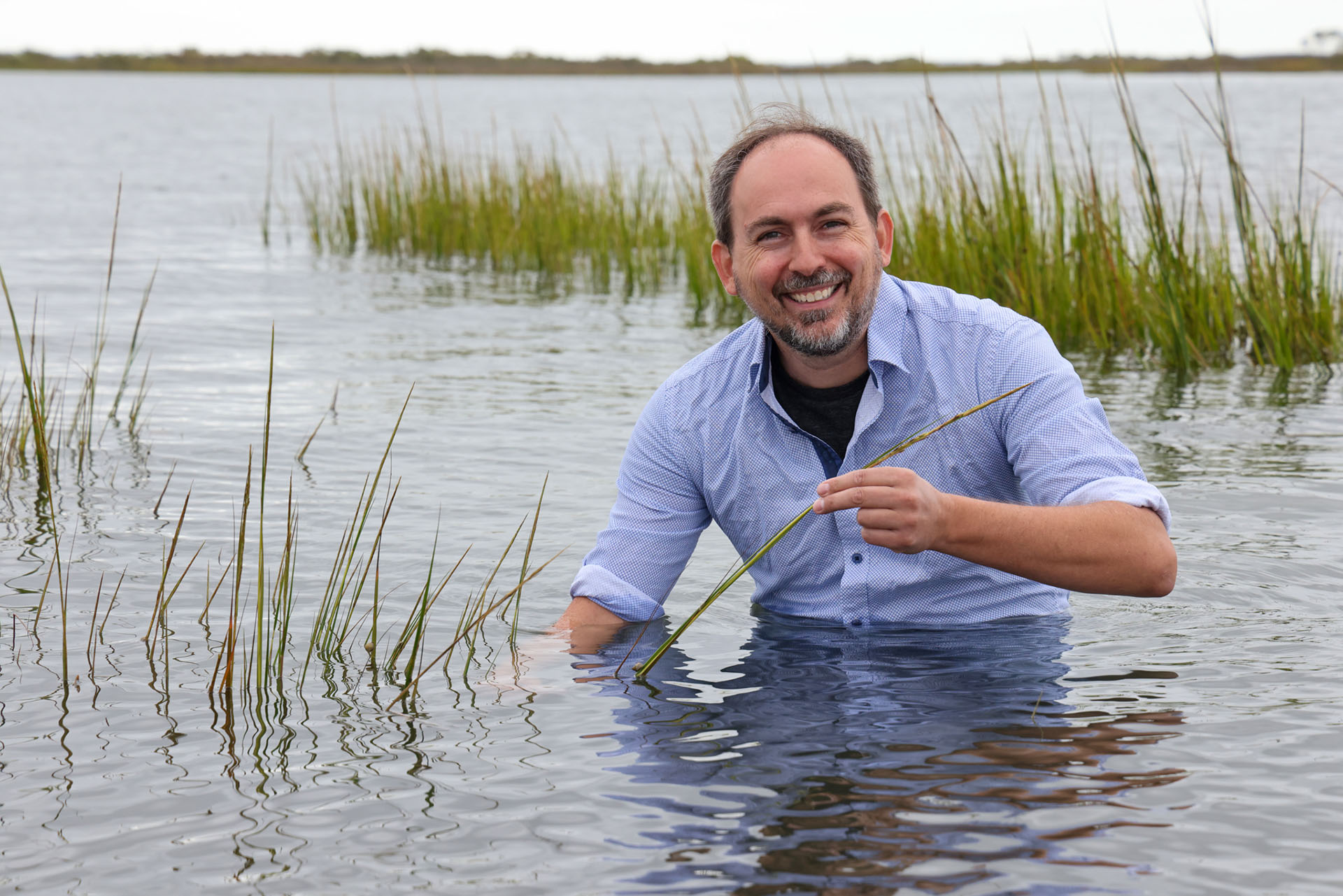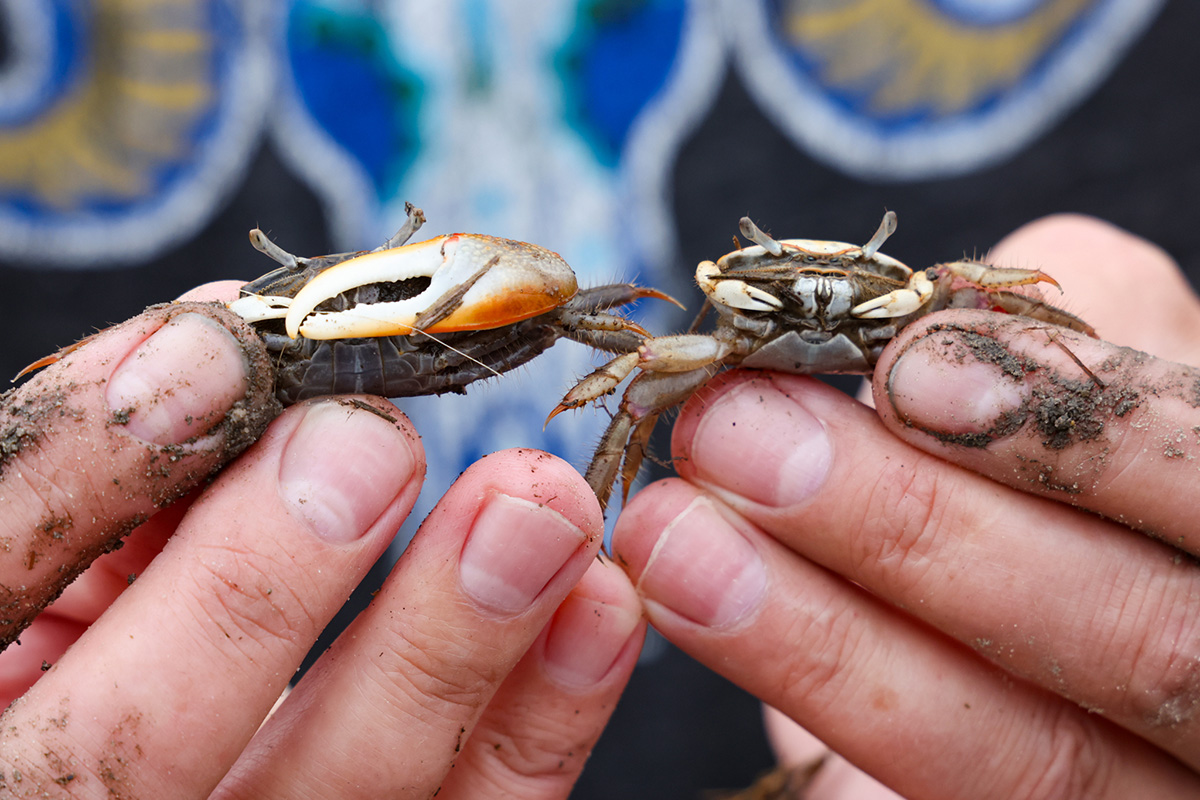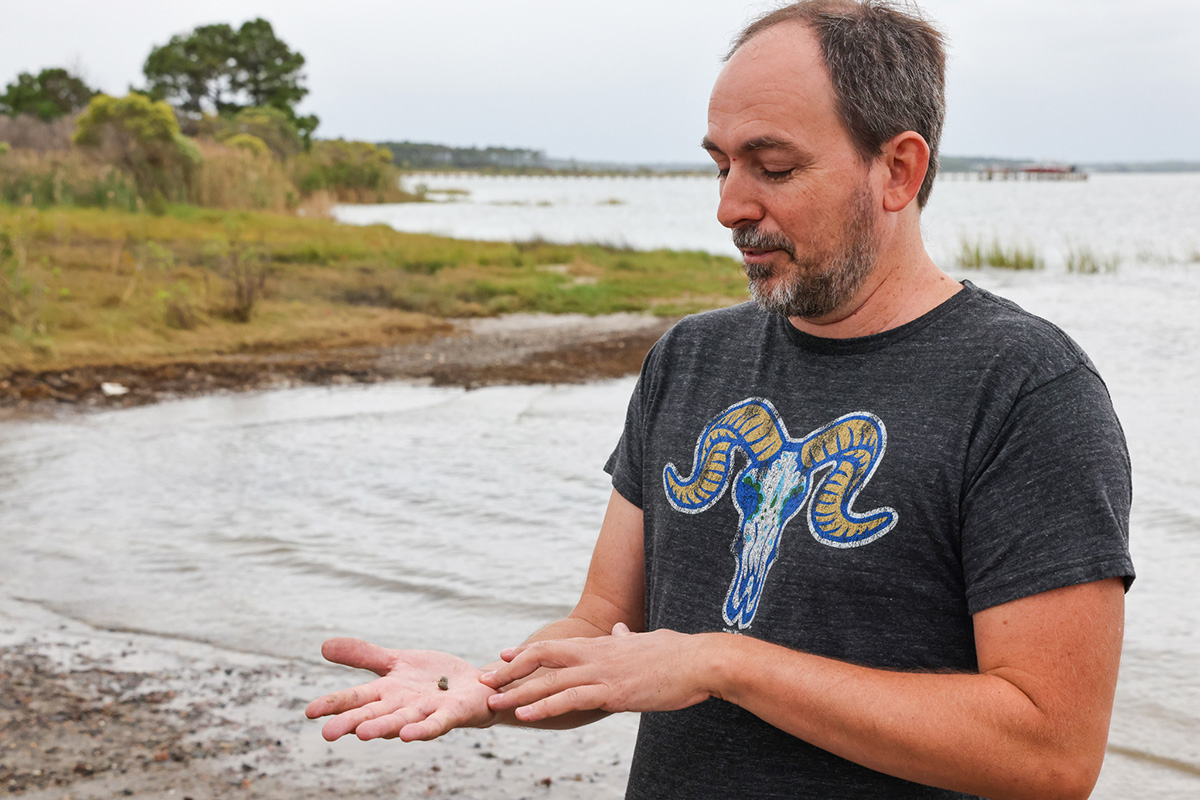Fall Tack Lecture brings the salt marsh to Sadler Center
The fall 2024 Tack Faculty Lecture, “Space Fish, Zombie Shrimp and Other Saltmarsh Tales,” is scheduled for Nov. 14.
 Some of the toughest creatures on Earth live closer than you might think. We have much to learn from the evolutionary tales of the extraordinary life found in salt marshes, grassy coastal prairies that are sometimes land and sometimes ocean depending on the tide.
Some of the toughest creatures on Earth live closer than you might think. We have much to learn from the evolutionary tales of the extraordinary life found in salt marshes, grassy coastal prairies that are sometimes land and sometimes ocean depending on the tide.
Dive into the salt marsh with marine ecologist David Samuel Johnson at William & Mary’s fall Tack Lecture on Nov. 14 at 7 p.m. in the Sadler Center’s Commonwealth Auditorium. His talk, “Space Fish, Zombie Shrimp and Other Saltmarsh Tales,” will contain bizarre and captivating stories that reveal the remarkable but often overlooked life of salt marshes.
The event is free and open to the public with a reception to follow, and attendees are asked to RSVP.
“Fish becoming space sick, mind-controlling parasites, ghost forests, what’s not to like? I may even throw in some props to really bring the marsh to the audience,” said Johnson, Class of 1964 Associate Professor at William & Mary's Batten School & VIMS. “Parts of my talk might sound like science fiction, but these are stories of survival, adaptation and evolution. While it relates to my research, my goal is to entertain and leave everyone excited to learn more about what lies beneath our grassy shores.”
 Joining W&M and VIMS in 2015, Johnson’s research focuses on the impacts of global change on coastal species and has garnered national attention. He was recently featured by Science News for his work documenting the migration of fiddler crabs into northern states as a result of climate change. Other research has focused on invertebrate responses to ghost forests, which result as coastal forests are converted into salt marshes; parasite-host interactions; the impacts of burrowing crabs on carbon cycling; the effects of the BP oil spill on salt marshes; and more.
Joining W&M and VIMS in 2015, Johnson’s research focuses on the impacts of global change on coastal species and has garnered national attention. He was recently featured by Science News for his work documenting the migration of fiddler crabs into northern states as a result of climate change. Other research has focused on invertebrate responses to ghost forests, which result as coastal forests are converted into salt marshes; parasite-host interactions; the impacts of burrowing crabs on carbon cycling; the effects of the BP oil spill on salt marshes; and more.
“If you love crab cakes, oysters, fishing, birding, you love a salt marsh. They provide habitat and food for all of these animals that we care about, protect us from storms, guard against sea level rise and facilitate all of these incredible environmental processes,” said Johnson.
However, he notes that salt marshes haven’t always been viewed favorably. While they were revered by Native Americans for the bountiful food and other resources they provide, European settlers saw them as cursed places harboring disease and evil spirits. Many marshes were filled, drained, or used as garbage dumps—a practice that continued in the U.S. into the 1950s.
 The loss of salt marshes has implications that go beyond the plants and animals that depend on them. “Blue carbon,” organic carbon stored in coastal and marine ecosystems like marshes and mangroves, is critical to combating climate change.
The loss of salt marshes has implications that go beyond the plants and animals that depend on them. “Blue carbon,” organic carbon stored in coastal and marine ecosystems like marshes and mangroves, is critical to combating climate change.
Johnson works closely with other researchers at the Batten School and VIMS to understand and quantify carbon cycling in coastal environments. One collaborator, Associate Professor Matt Kirwan, has documented the resilience of salt marshes in the face of global change as well as the implications of their loss in terms of climate change. Several of Kirwan’s studies show how, in the absence of hardened barriers, salt marshes migrate inland in response to sea level rise. Another Batten School and VIMS study published in 2023 revealed an alarming reality unfolding along Virginia’s Eastern Shore—blue carbon is being released into the atmosphere faster than it can be sequestered as barrier islands erode and relocate closer to the existing coastline.
“Only recently have we started to understand the processes at play in salt marshes as well as the many services and benefits that these ecosystems provide to humans,” said Johnson. “I want people to rediscover the beauty of the salt marsh and better understand their essential roles in the things that we value and enjoy.”
The Tack Faculty Lecture Series is made possible through a generous commitment by Martha Frechette Tack ’78, P ‘06 and Carl E. Tack ’78, P ’06. Initially launched in 2012, the Tack’s commitment has created an endowment for the series of speakers from the W&M faculty.

